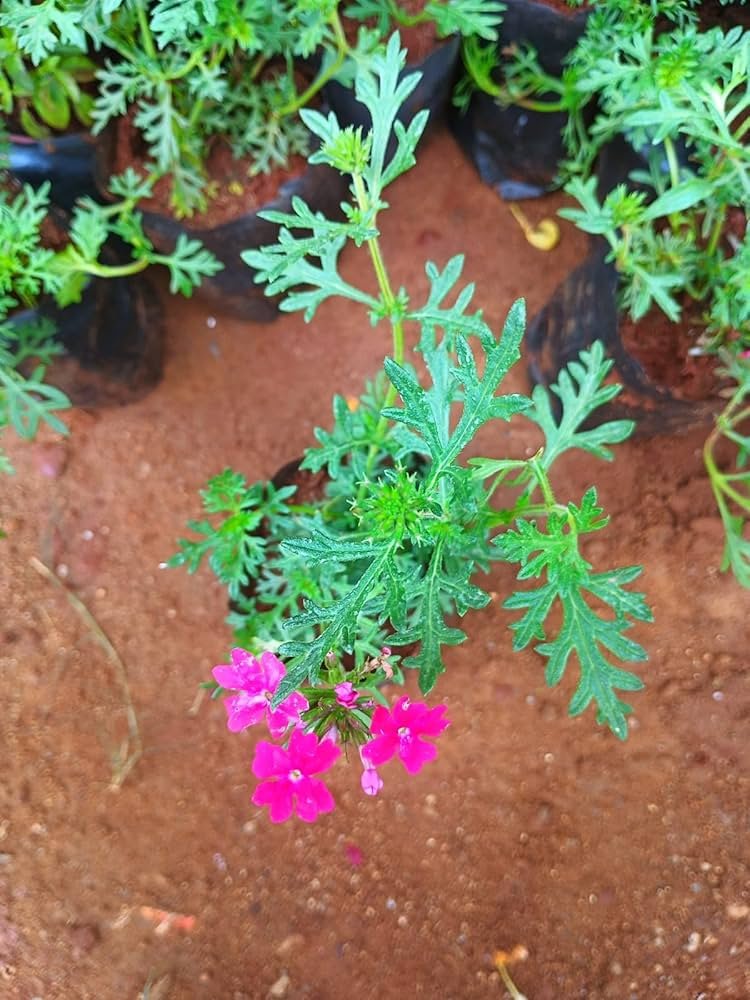Discover how to grow and care for Mossy Verbena, a low-maintenance plant with charming, moss-like foliage and vibrant blooms. Get tips on planting, maintenance and enhancing your garden with this versatile beauty.
Are you looking for a charming, easy-to-grow plant to add a touch of whimsy to your garden? Look no further than Mossy Verbena (Verbena tenuisecta)! This delightful perennial boasts delicate, fern-like foliage that resembles moss, topped with clusters of small, vibrant flowers. In this guide, we’ll explore everything you need to know about growing and caring for Mossy Verbena, from planting to maintenance and beyond.
Here’s an easy-to-read and verified information chart for Mossy Verbena:
| Category | Details |
|---|---|
| Botanical Name | Verbena rigida |
| Common Name | Mossy Verbena |
| Plant Type | Perennial or annual (depending on climate) |
| Hardiness Zone | 7-10 (USDA) |
| Sun Exposure | Full sun |
| Soil Type | Well-draining, sandy or loamy soil |
| Watering | Water regularly, keeping soil consistently moist but not soggy |
| Growth Habit | Spreading, low-growing ground cover |
| Height/Spread | Height: 6-12 inches (15-30 cm); Spread: 18-24 inches (45-60 cm) |
| Special Features | Fragrant clusters of vibrant flowers; lush, moss-like foliage |
What is Mossy Verbena?

Mossy Verbena, also known as Moss Verbena or Fine-leaved Verbena, is a low-growing, spreading plant native to South America. It’s prized for its:
- Finely divided, moss-like foliage
- Small, colorful flowers in shades of purple, pink, or white
- Low-maintenance nature
- Drought tolerance
- Ability to attract butterflies and other pollinators
How to Grow Mossy Verbena

Planting Mossy Verbena
Follow these steps to get your Mossy Verbena off to a great start:
- Choose the right location: Select a spot with full sun to partial shade.
- Prepare the soil: Ensure well-draining soil. Amend heavy clay soils with compost or sand.
- Timing: Plant in spring after the last frost, or in early fall in warmer climates.
- Spacing: Place plants 12-18 inches apart to allow for spreading.
- Planting depth: Plant at the same depth as it was in its nursery container.
- Watering: Water thoroughly after planting and keep soil moist until established.
Care and Maintenance
Mossy Verbena is relatively low-maintenance, but here are some care tips to keep it thriving:
- Watering: Once established, water deeply but infrequently. Mossy Verbena is drought-tolerant.
- Fertilizing: Apply a balanced, slow-release fertilizer in spring.
- Pruning: Trim back by one-third in late winter to encourage bushy growth.
- Deadheading: Remove spent flowers to promote continuous blooming.
- Winter care: In colder regions, apply a layer of mulch for winter protection.
Common Problems and Solutions
While Mossy Verbena is generally hardy, it can face a few issues:
- Powdery mildew: Improve air circulation and avoid overhead watering.
- Root rot: Ensure well-draining soil and avoid overwatering.
- Leaf spot: Remove affected leaves and improve air circulation.
- Aphids: Spray with a strong stream of water or use insecticidal soap.
Creative Ways to Use Mossy Verbena in Your Garden
Mossy Verbena’s versatile nature makes it perfect for various garden applications:
- Ground cover: Its spreading habit makes it an excellent choice for covering bare areas.
- Rock gardens: The delicate foliage and flowers complement rocky landscapes beautifully.
- Hanging baskets: Let it trail over the edges for a cascading effect.
- Border plantings: Use as a low-growing border along pathways or garden beds.
- Butterfly gardens: Plant alongside other pollinator-friendly flowers to attract butterflies.
Companion Plants for Mossy Verbena
Enhance your garden’s beauty by pairing Mossy Verbena with these complementary plants:
- Lavender: The purple flowers and silver foliage contrast nicely with Mossy Verbena.
- Sedum: These drought-tolerant succulents share similar growing conditions.
- Black-Eyed Susan: The bright yellow flowers provide a striking color contrast.
- Ornamental Grasses: The fine texture of grasses complements Mossy Verbena’s delicate foliage.
- Salvia: Another pollinator-friendly plant that thrives in similar conditions.
Propagating Mossy Verbena
Expand your Mossy Verbena collection with these propagation methods:
- Division: In spring, dig up and divide established plants.
- Cuttings: Take stem cuttings in summer and root them in moist potting soil.
- Seeds: Collect seeds from dried flower heads and sow in spring.
Mossy Verbena is a delightful, low-maintenance plant that can add charm and color to any garden. With its moss-like foliage and cheerful blooms, it’s sure to become a favorite in your landscape. Whether you’re a seasoned gardener or a beginner, Mossy Verbena’s easy-care nature makes it a perfect choice for adding beauty and attracting pollinators to your outdoor space.
By following the tips in this guide, you’ll be well on your way to growing and enjoying this versatile beauty. So why not give Mossy Verbena a try? Your garden (and the butterflies) will thank you!
Learn more about creating a butterfly garden
Discover other low-maintenance perennials for your garden
Happy gardening and enjoy the moss-like magic of Verbena tenuisecta in your outdoor oasis!
Pingback: Zone 6 Perennials : Expert Guide to Hardy Flowering Plants